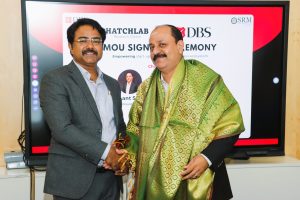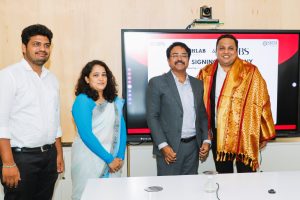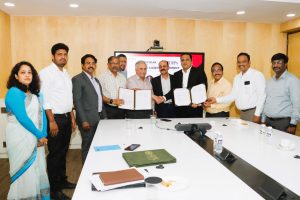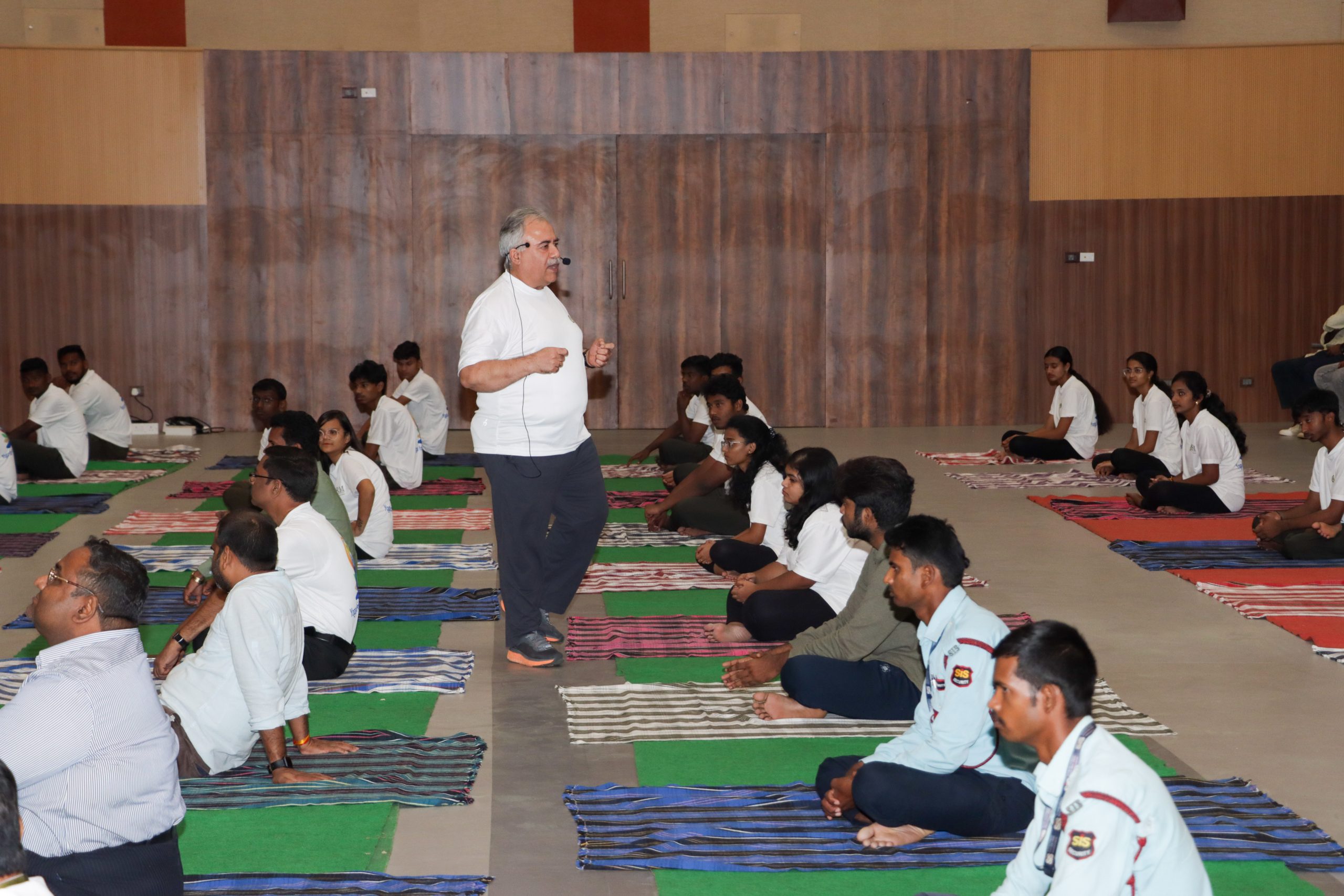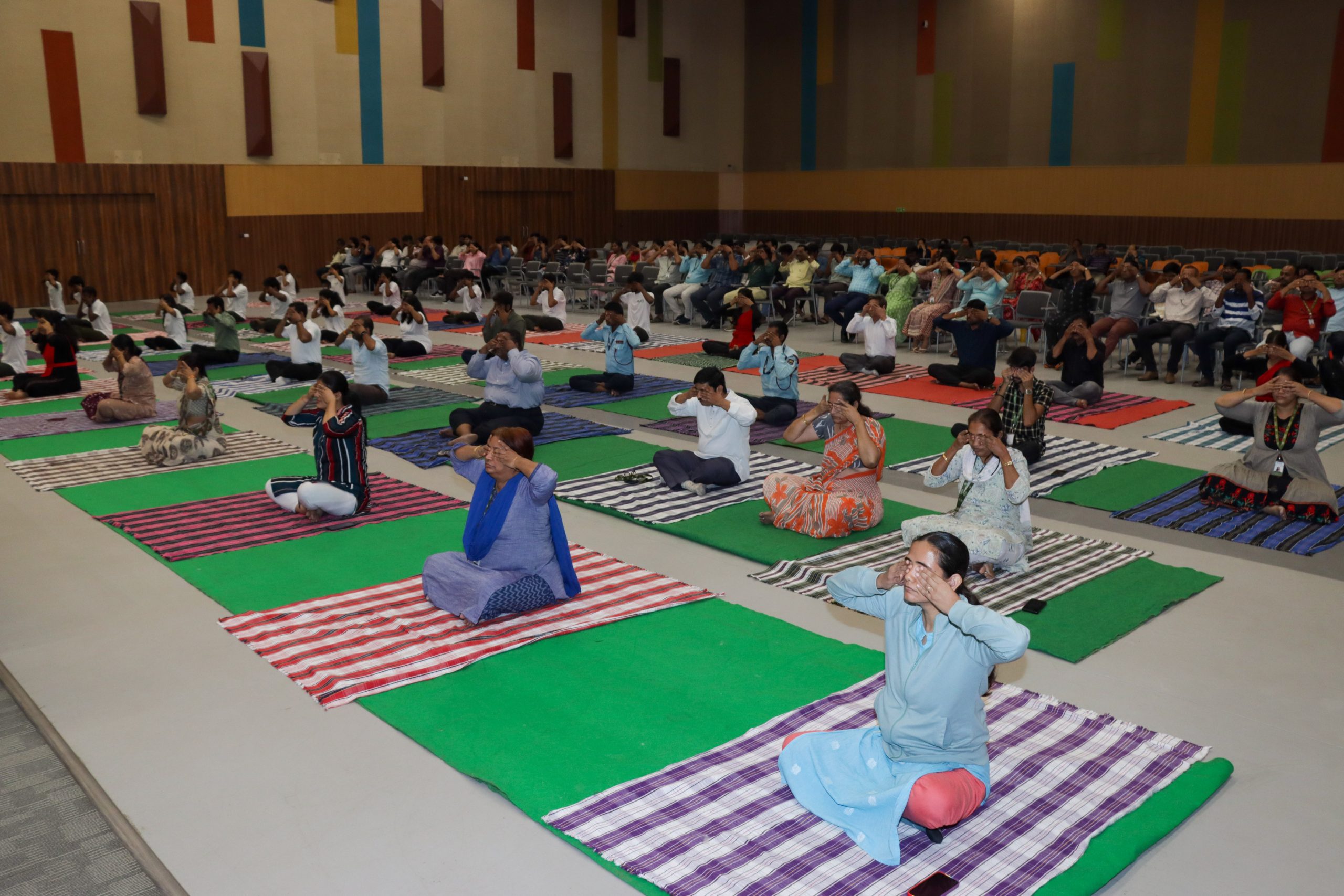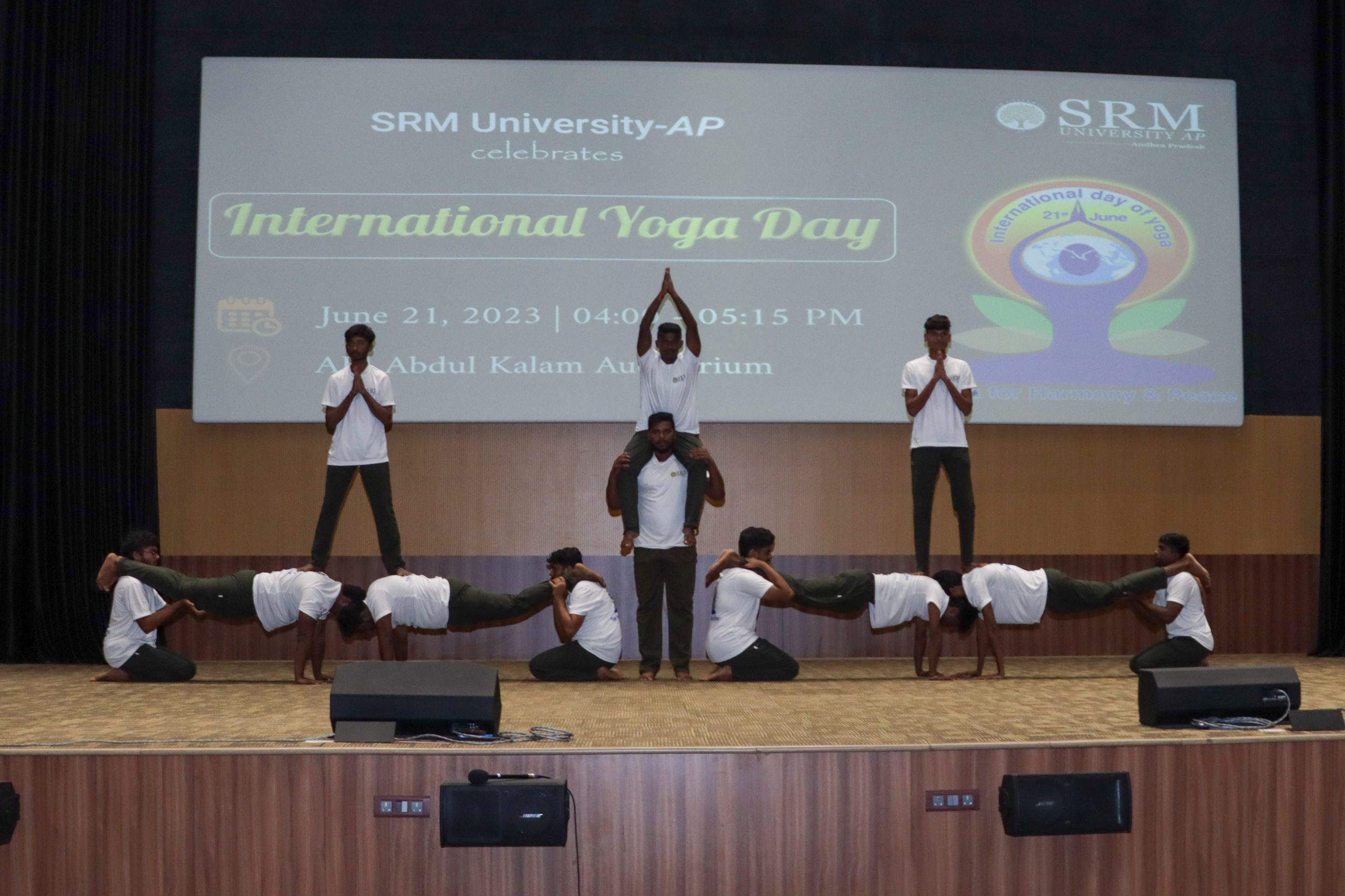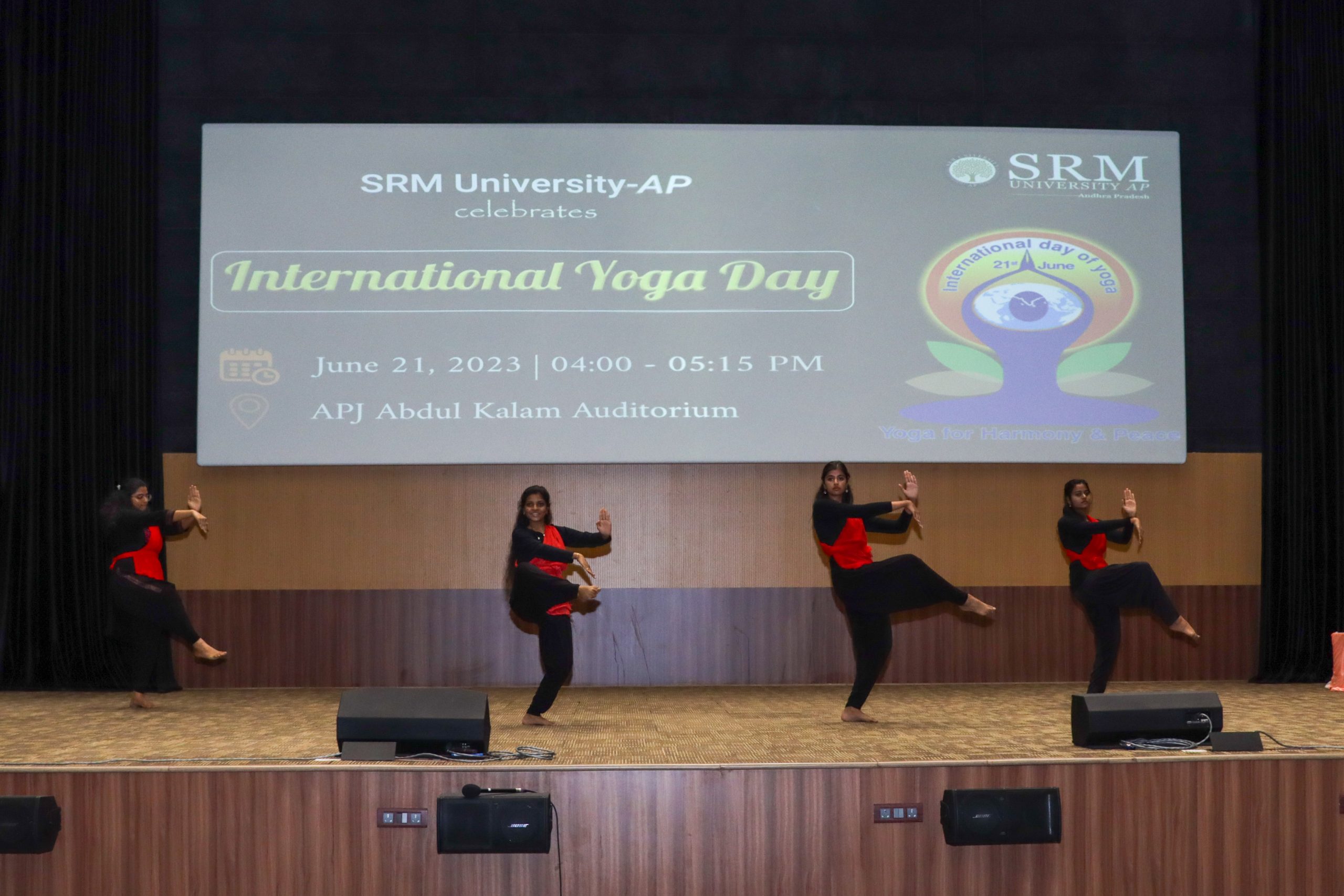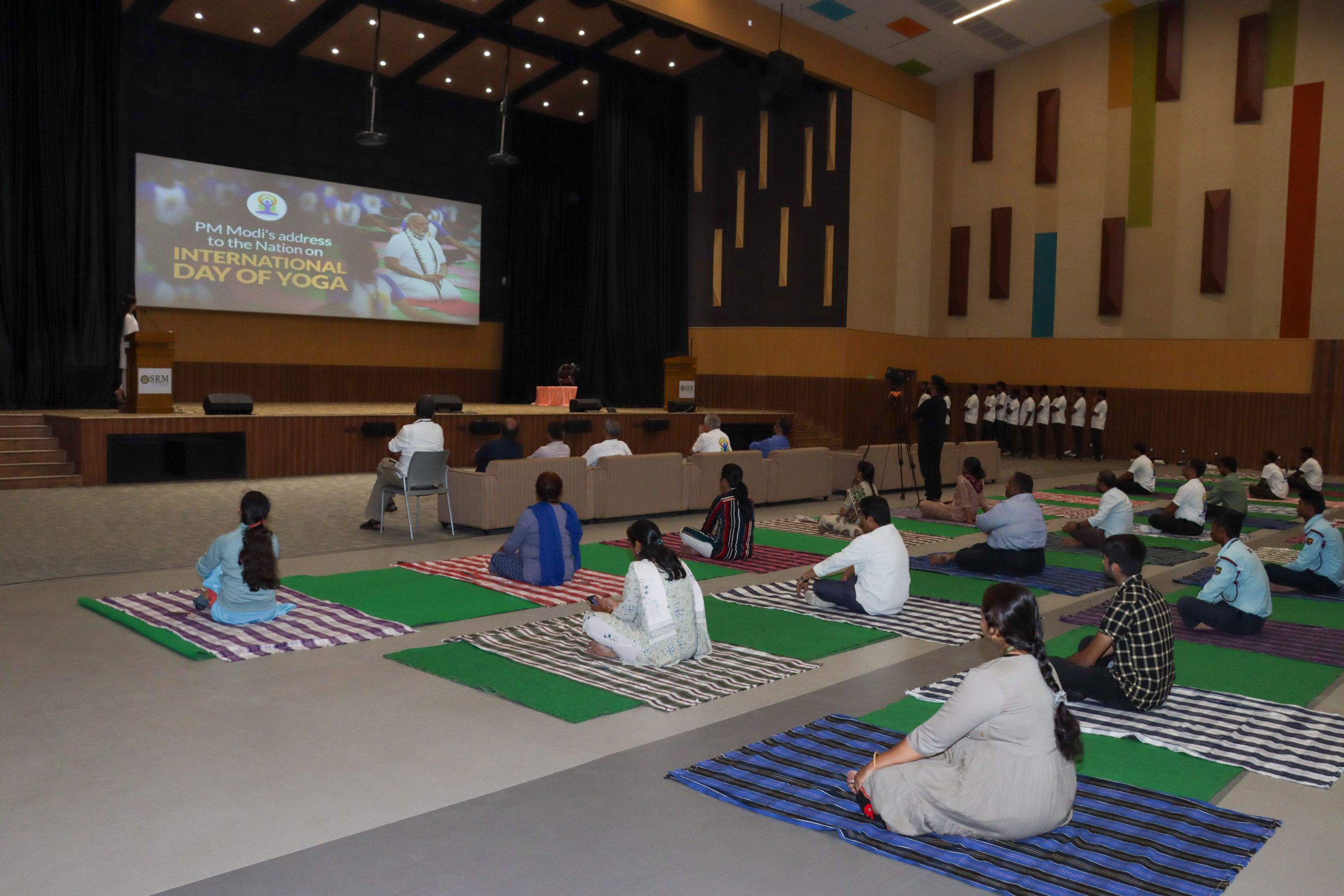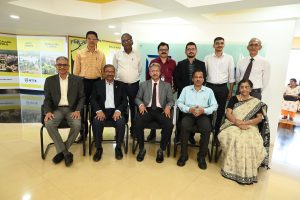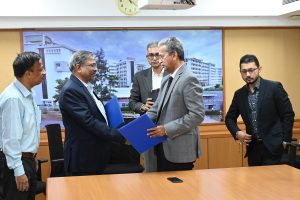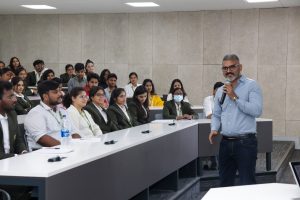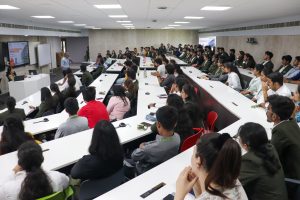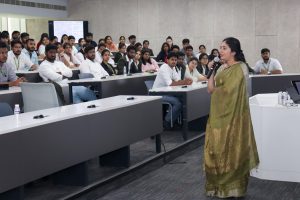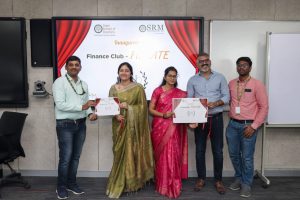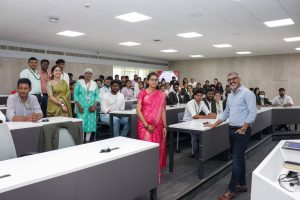All Management Events
- From Aspiring to Achieving: How an MBA Programme Can Help You Reach Your Goals June 26, 2023
MBA is one of the most widely pursued and coveted management degree programmes in the world that is curated to equip students with modern knowledge and skills in business management, leadership, and entrepreneurship. MBA programmes are offered by various institutes and business schools across the globe.
MBA graduates are well-equipped with the skills required to excel in their careers, whether they seek to pursue a leadership role in an organisation, start their own venture, or become a consultant. However, before finalising the course, students must explore different MBA courses and should acquire MBA course details.

In this article, we will explore the MBA course details, including the MBA curriculum, eligibility, and career prospects, so that you can get a comprehensive outlook of the MBA programme in India and make an informed decision accordingly.
What is the MBA Course Curriculum?
The MBA curriculum typically incorporates a broad range of business-related topics. At the beginning of the programme, students are generally taught foundational courses that equip them with a comprehensive overview of business practices and principles. Here is an MBA subjects list that incorporates some of the important subjects:
- Accounting and Financial Management
- Organisational Behavior and Leadership
- Marketing Management
- Business Strategy and Policy
- Operations Management and Supply Chain Management
- Human Resource Management
- Entrepreneurship and Innovation
- Business Ethics and Corporate Governance
- Information Technology and E-Business
- International Business
As individuals progress through the course, they can specialise in a particular area of their interest. In addition to the coursework, an MBA also incorporates experiential learning opportunities, including internships, case studies, and consulting projects. Many MBA courses in India also impart networking opportunities with industry professionals and alumni.
What Are the MBA Eligibility Criteria?
The eligibility criteria for MBA programmes may depend on the institution offering the programme. Therefore, applicants should refer to the admission requirement guidelines set by the respective institution. Moreover, some common MBA eligibility criteria require applicants to have the following:
- A bachelor’s degree in any discipline from a reputed institute or university.
- A minimum aggregate of 50% score in their bachelor’s degree.
- Qualifying scores in state-level or national MBA entrance exams, including CAT, MAT, GMAT, XAT, etc.
- Proficiency in the English language can be tested through exams like TOEFL or IELTS for international students.
What Are the Career Prospects of an MBA?
An MBA programme in India opens up a wide array of career opportunities, including executive-level management positions in multiple industries. Graduates can pursue careers in multinational corporations, government agencies, startups, and non-profit organisations and even launch their own ventures. Here are some promising career opportunities that MBA graduates can pursue:
- Management Consultant
- Investment Banker
- Human Resource Manager
- Operations Manager
- Business Development Manager
- Entrepreneur
- Supply Chain Manager
- Risk Manager
- Data Analyst
- Project Manager
- Product Manager
- Business Analyst
- Management Accountant
Shape Your Management Career with an MBA at SRM University-AP
With the latest operating paradigms and business models continuously emerging, the business world today has become dynamic. The Paari School of Business at SRM University-AP has redesigned and revamped its MBA curriculum in response to these varying needs. The new MBA curriculum at SRM University-AP is as follows:
- Immersive
- Experiential
- Innovative
- Community-focused
- Highly industry-focused
- Focused on holistic development
Paari School of Business at SRM University-AP offers various specialisations that are highly in demand in the job market. The Specialisations offered include:
- Human Resources Management
- Marketing
- Finance
- Business Analytics
- Family Business
- Operations and Logistics Management
The restructured MBA curriculum at SRM University-AP will go a long way in meeting student objectives and catering to industry demands. The curriculum also offers a range of elective courses to choose from in specialisations like Finance, Marketing, Operations, HR and Analytics.
The new curriculum is specially curated to prepare students to hit the ground running when they work in renowned organisations after graduation. As a result, the track record of SRM University-AP MBA placements is outstanding. The highest SRM University-AP MBA placement package for the academic year 2021-2022 stood at INR 31 LPA.
Wrapping Up
Pursuing an MBA can land you a plethora of career opportunities, enhance your skills and knowledge, and provide you with a platform for personal and professional growth. Therefore, it is a valuable investment for individuals seeking to make a mark in the business world.
Continue reading → - Join the Next Generation of Business Leaders with a BBA Programme June 26, 2023
In today’s dynamic and competitive business landscape, the demand for qualified and skilled professionals possessing a BBA degree is on the surge. Recruiters are seeking graduates with strong business acumen, problem-solving skills, critical thinking, and effective communication abilities. Our BBA programme equips you with the vital knowledge and the above skills to fulfil these demands and provides a competitive edge in the world of business.
A BBA is highly sought after by prospective students seeking to pursue a career in business or management. This undergraduate degree programme equips students with a detailed understanding of core business concepts, including finance, accounting, human resources, marketing, and operations management.

The following article will take you to the comprehensive BBA Honours course details, exploring its curriculum, syllabus, specialisations, and promising career opportunities available for graduates. Therefore, this article is a must-read for individuals interested in the world of business and management.
What is the BBA Curriculum?
The BBA curriculum typically includes courses designed to provide individuals with a solid foundation in business fundamentals. The exact BBA syllabus may depend on the institute offering the programme, but commonly the curriculum includes core subjects. Here are some of the core subjects included in the BBA course syllabus:
- Accounting Principles
- Marketing Management
- Human Resource Management
- Business Ethics
- Organisational Behavior
- Corporate Finance
- Strategic Management
- Business Law
- Business Statistics
- Leadership and Team Management
- Project Management
In addition to the above-mentioned core courses, students have the opportunity to specialise in a particular area of their interest, like entrepreneurship, international business, or supply chain management.
The BBA course syllabus is curated to develop essential skills in individuals, including problem-solving, critical thinking, communication, and leadership. Many BBA courses also offer experiential learning opportunities, like internships, case studies, and co-op placements, to provide individuals with real-world practical experience in the business world.
What Are the Career Opportunities After BBA?
The BBA course prepares students for a variety of career options in the business and management areas and provides them with the vital knowledge and skills essential to succeed in an ever-changing business landscape. The program graduates are well-equipped with a diverse skill set and knowledge that make them well-suited for numerous business and management-related roles across various industries. Here are some promising and lucrative career opportunities that BBA course graduates can pursue:
- Management Trainee
- Marketing Executive
- Financial Analyst
- Human Resource Executive
- Operations Executive
- Entrepreneur
- Sales Executive
- Business Analyst
Empower Your Business Mindset with a Top-notch BBA Programme at SRM University-AP
The BBA (Honours) programme offered at The Paari School of Business at SRM University-AP is typically a three-year programme. However, the university also allows students to go for the fourth year BBA (Honours by Research) degree, which paves the way for their aspirations to study a master’s degree abroad and is in accordance with the New Education Policy (NEP).
Additionally, the university provides its students with an option of a semester abroad (called the Semester Abroad Programme or SAP). Some of the international universities included in SAP are The Hebrew University of Jerusalem, the University of California (Berkely), the University of Dundee, Cyprus West University and Mahidol University.
SRM University-AP offers some cutting-edge specialisations in the BBA programme. These specialisations include:
- Human Resources Management
- Marketing
- Finance
- Family Business
- Business Analytics
Moreover, the BBA curriculum at SRM University-AP has been carefully revamped and overhauled in response to varying student and industry needs. The new BBA curriculum is more –
- Immersive
- Experiential
- Innovative
- Community-focused
- Research-oriented
- Entrepreneurship-focused
- Focused on holistic development
Further, the new BBA curriculum at SRM University-AP will go a long way in fulfilling student objectives.
To Conclude
Pursuing a BBA can lead you to career advancement, personal growth, and financial stability, making it a valuable treasure in one’s future. Whether you are a class 12th student or a working professional, a BBA degree is worth considering for individuals interested in the world of business and management.
Continue reading → - SRM University-AP Signs MoU with DBS Bank, India June 23, 2023
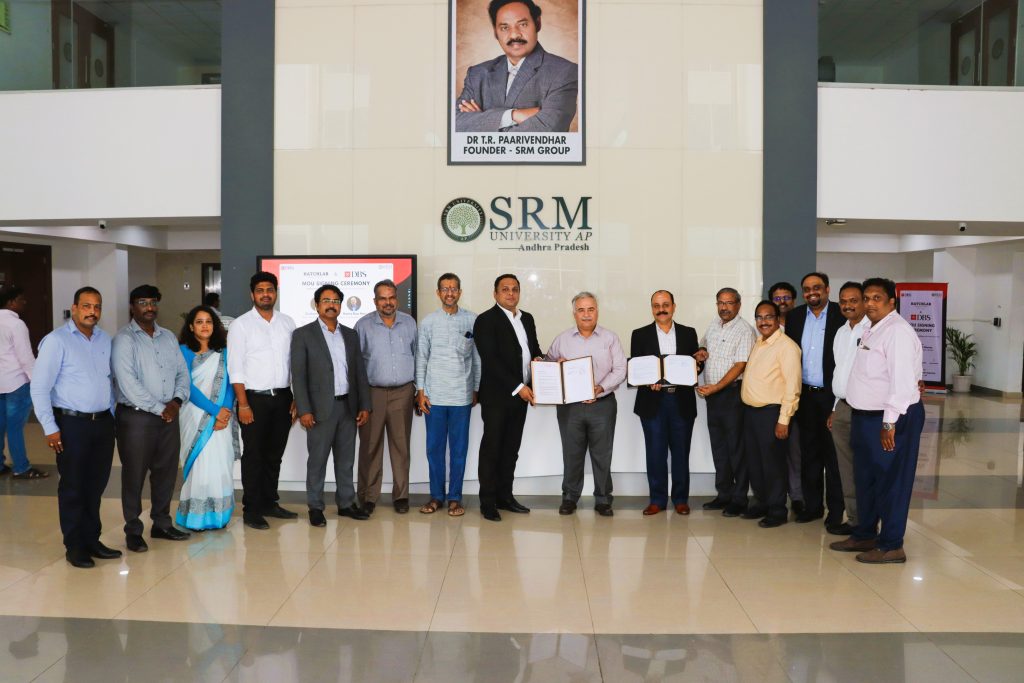
Hatchlab Research Centre, a technology and livelihood incubator, under The Directorate of Leadership, Innovation and Entrepreneurship has accomplished a milestone achievement as it joined forces with DBS Bank, India. A Memorandum of Understanding (MoU) was signed between the two parties in order to foster an entrepreneurial ecosystem in the varsity. The collaboration aims to empower startups and offer incredible opportunities for our entrepreneurial community at SRM University-AP.
Senior Vice Presidents, Mr Sushant Shetty and Mr Rama Rao Peri, other senior members of the leadership team from DBS Bank India, Prof. Manoj K Arora, Vice Chancellor, SRM University-AP ; Dr R Premkumar, Registrar, SRM University-AP and Mr Udayan Bakshi, Associate Director – Entrepreneurship and the leadership team of Hatchlab Research Centre graced the occasion.
Continue reading → - Harnessing Body, Mind and Spirit June 23, 2023
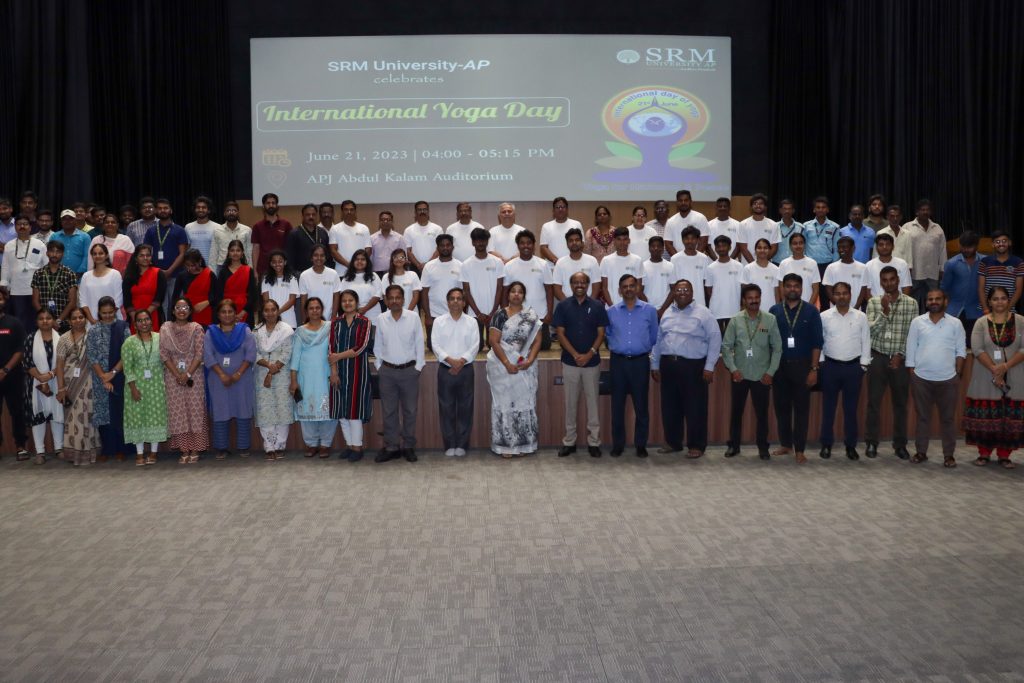
“Yoga is not just physical exercise. It is a union with the self, union with the universe. The universe lies outside and inside us. If we connect with ourselves, that means we are connecting with the universe” said Prof. Manoj K Arora, Vice Chancellor, SRM University-AP on the occasion of International Yoga Day Celebration held on June 21, 2023.
A yoga session was held under the joint venture of the Directorate of Sports and Directorate of Student Affairs. Prof. Arora, who participated as the Chief Guest in the programme addressed the staff and students through a session on Meditation and Wellness and announced the starting of a Yoga Club in the varsity.
Dr Abdul Mohimin, Assistant Director of Sports, spoke at length on the practice of yoga. Additionally, students of the varsity demonstrated dance yoga and clap yoga sessions, which left the audience invigorated. Dr R Premkumar, Registrar; Prof. Vishnupad, Dean-SLASS; Dr K Mohan, Director-ITKM; Dr Vijay Kumar Upadhyay, Director-Sports; Dr Manish Kumar, Director-Human Resources; Mr Pankaj Belwariar, Director-Communications; Mrs Suma N, CFAO; faculty; staff and students participated in the celebration.
- Yoga is the Process of Uniting the Mind and Self June 23, 2023
Andhra Patrika
Continue reading →
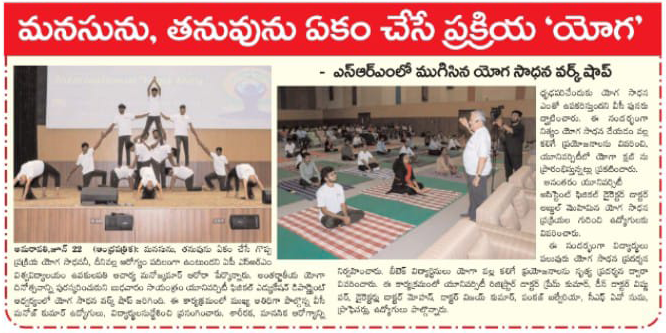
Surya
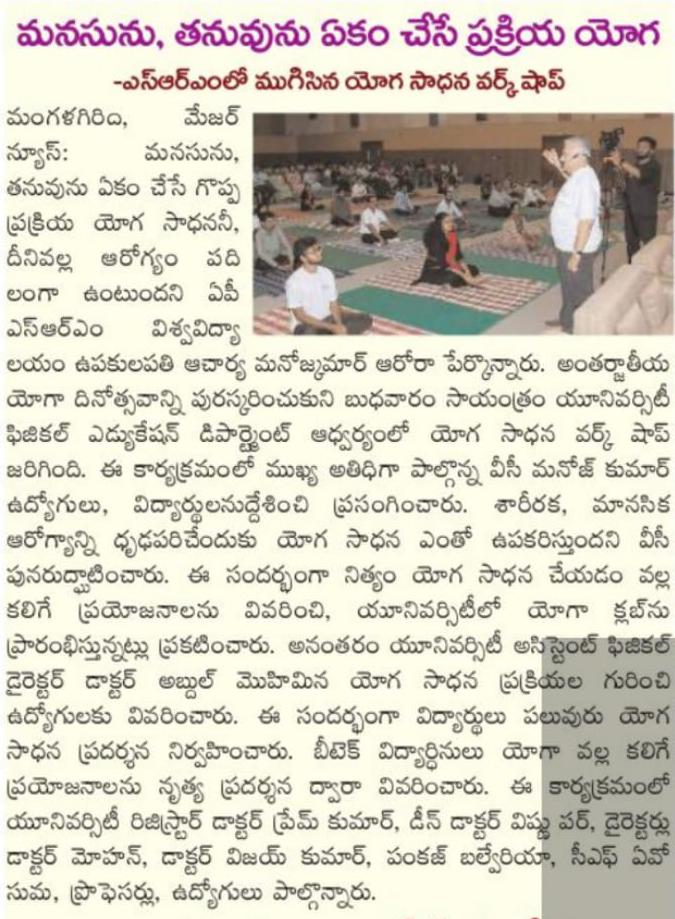
Vartha
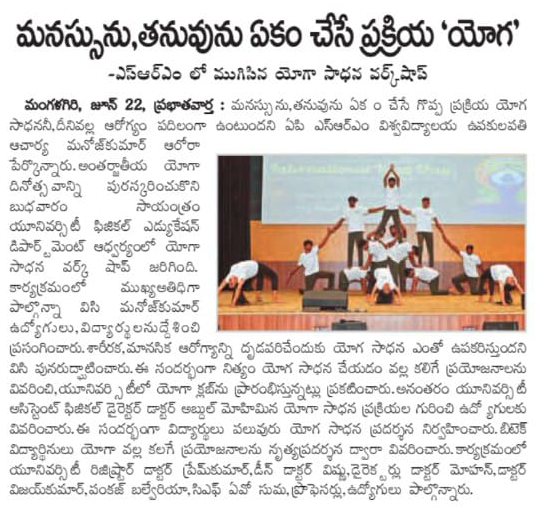
- MoU with NITTE (Deemed to be University) to foster research in Biological Science June 21, 2023
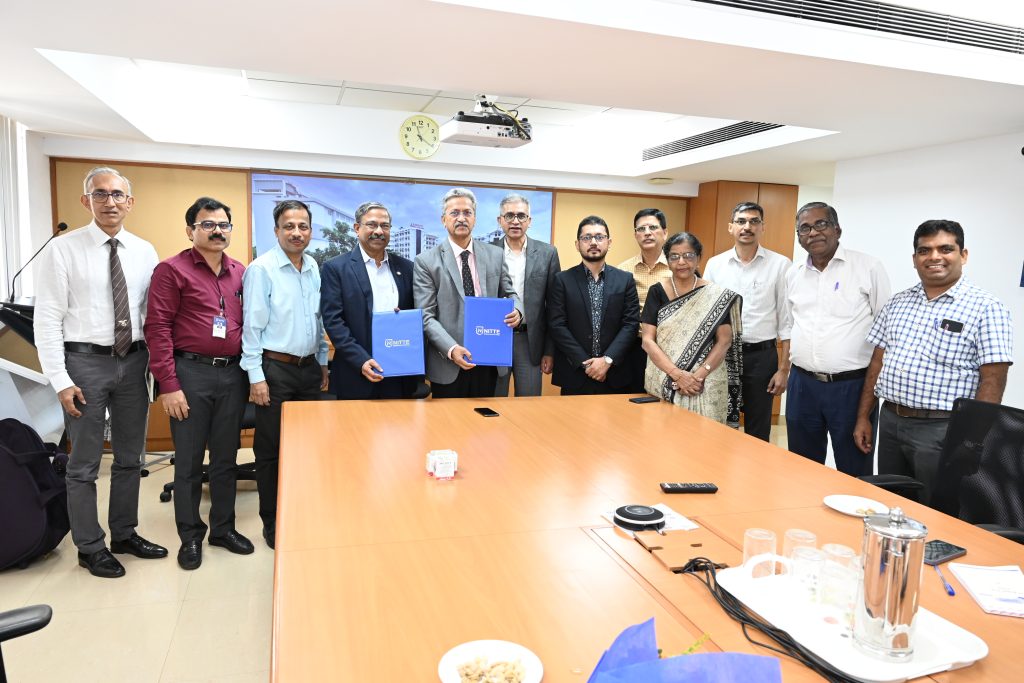
SRM University-AP inked an MoU with NITTE (Deemed to be University), Mangalore, on June 16, 2023, to promote academics and research in Biological Science. The MoU was signed at the NITTE Mangalore campus by Dr R Premkumar, Registrar, SRM University-AP and Prof. Dr Harsha Halahalli, Registrar, NITTE, in the presence of Prof. Dr MS Moodithaya, Vice-Chancellor, NITTE.
Prof. Dr MS Moodithaya termed this association a very important one for the university and expressed his confidence that the formal agreement will foster a mutually beneficial relationship through knowledge exchange, academic excellence, and research of societal relevance between the Universities. “I hope this collaboration can leverage both university’s strengths and complementary skills to undertake research projects that require a combination of expertise. I look forward to the synergy leading to more comprehensive and impactful research outcomes”, commented Prof. Manoj K Arora, Vice Chancellor, SRM University-AP, in response to the MoU.
Prof. Jayaseelan Murugaiyan, Head-Department of Biological Sciences, SRM University-AP and Dr Krishna Kumar, Associate Professor, NITTE University Centre for Science, Education and Research (NUCSER), have been collaborating for the last couple of years in the field of antimicrobial resistance. Prof. Anirban Chakraborty, Director- NUCSER and Prof. Jayaseelan Murugaiyan, SRM University-AP, are the authorised representatives from the respective universities. The Director, R&D; Director, Projects and DST-NUTEC; Director, Academia- Industry collaborations; Director, Institute Innovation Council; and Director, PG Studies and Clinical Research were among the others present on this occasion.
Continue reading → - SRM University-AP inked MoU with NITTE (Deemed to be University) to foster research in Biological Science June 20, 2023
The Hans India
Continue reading →
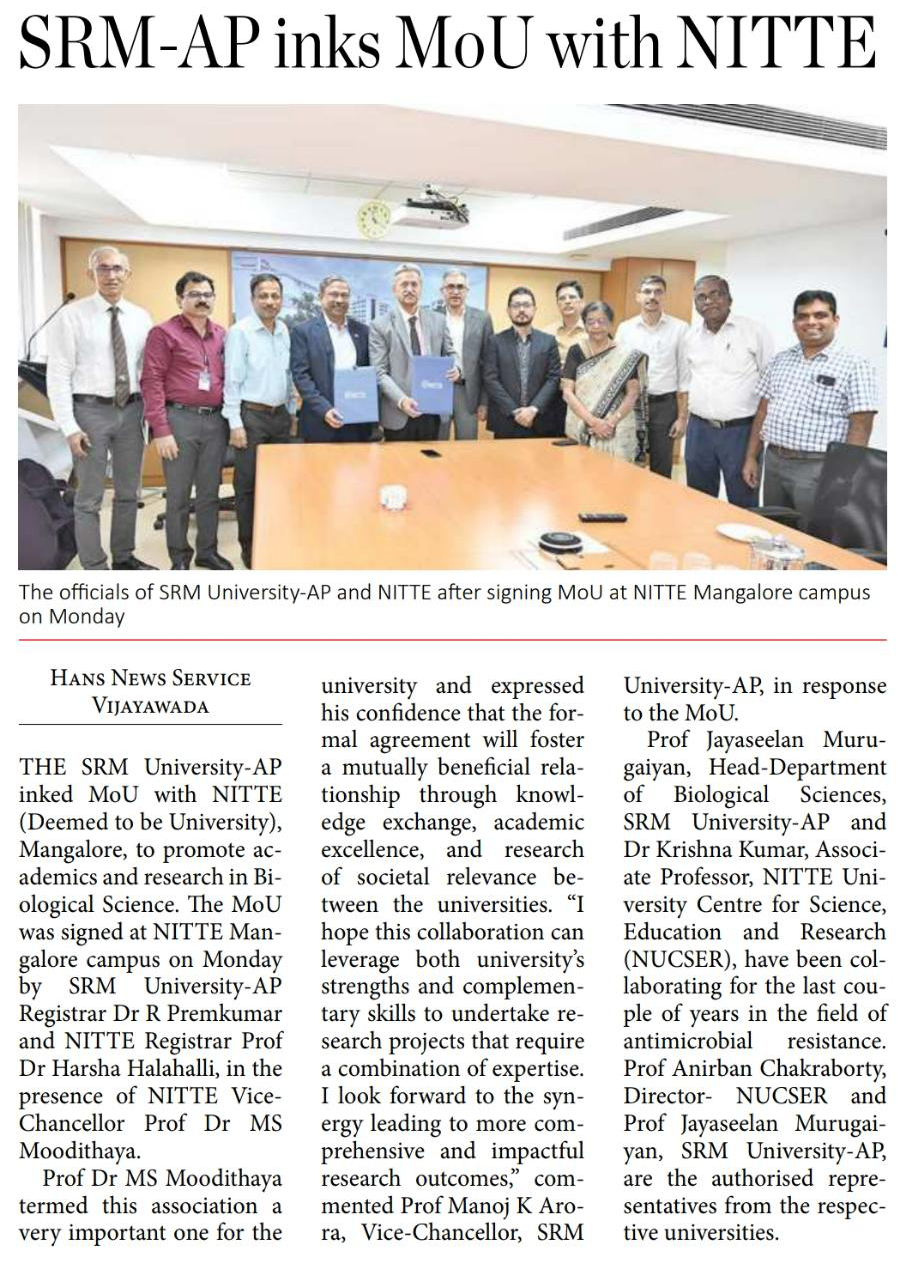
The Pioneer
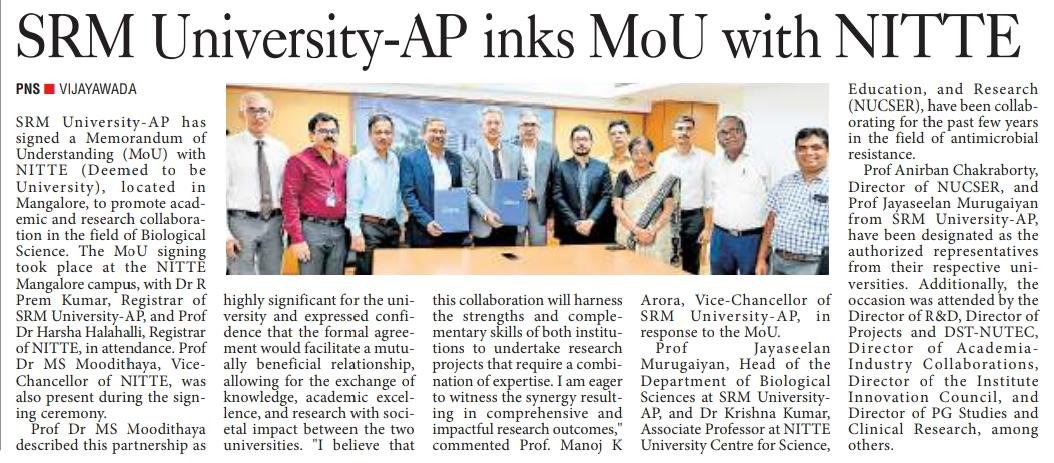
The News India Express
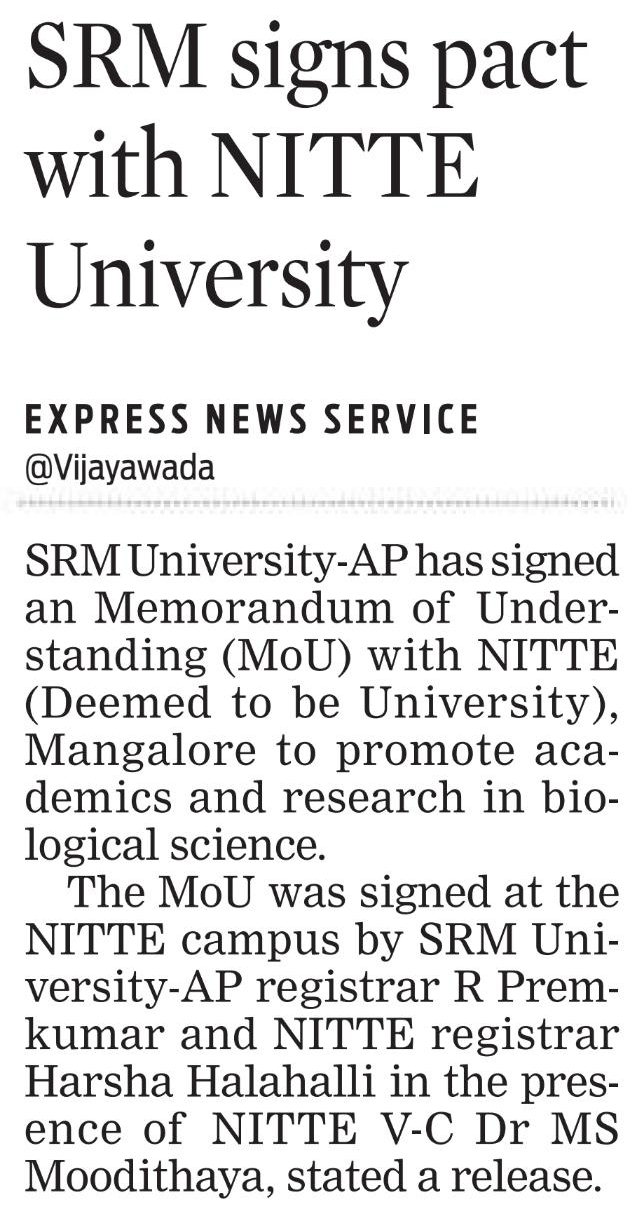
Andhra Patrika
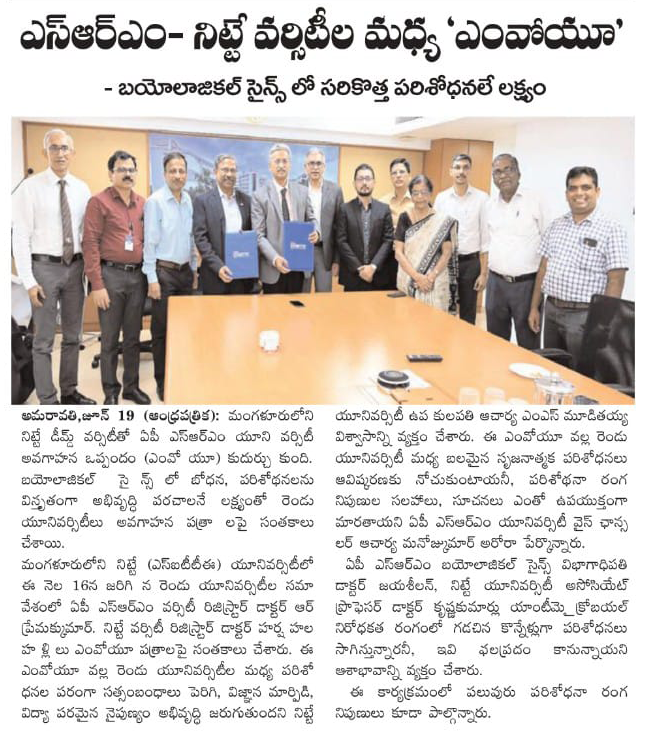
Andhra Prabha
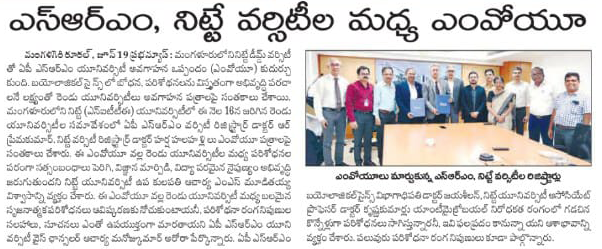
Vartha
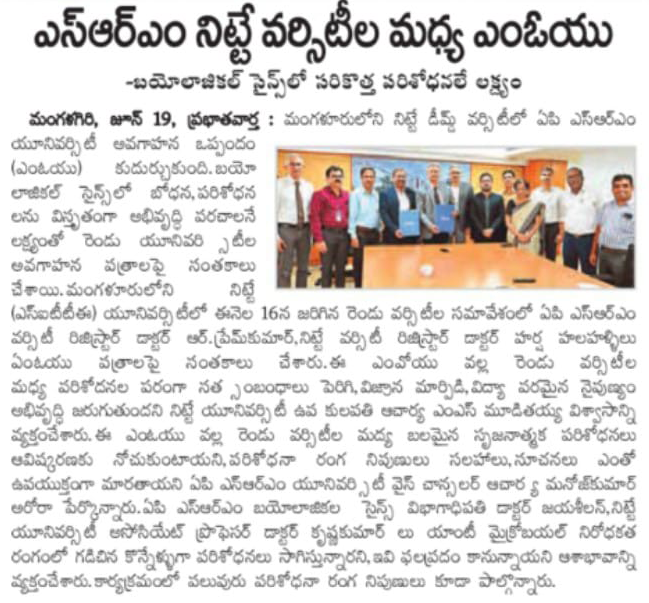
Andhra Jyoti
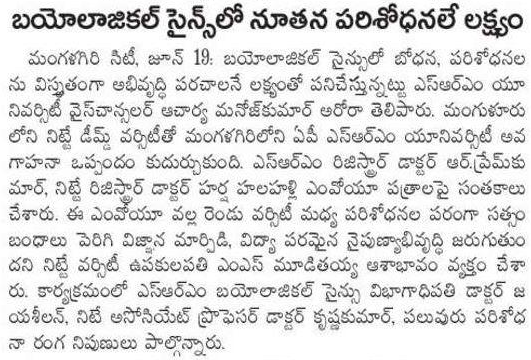
Sakshi
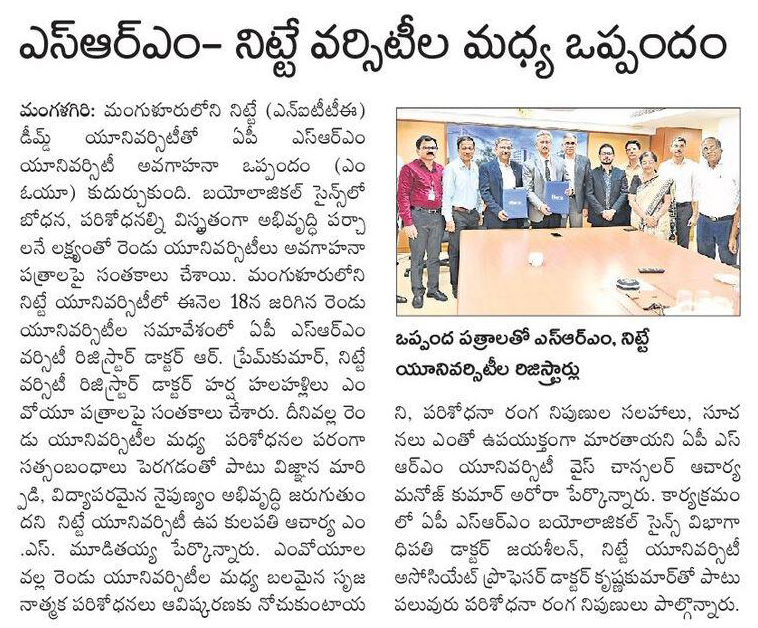
Surya
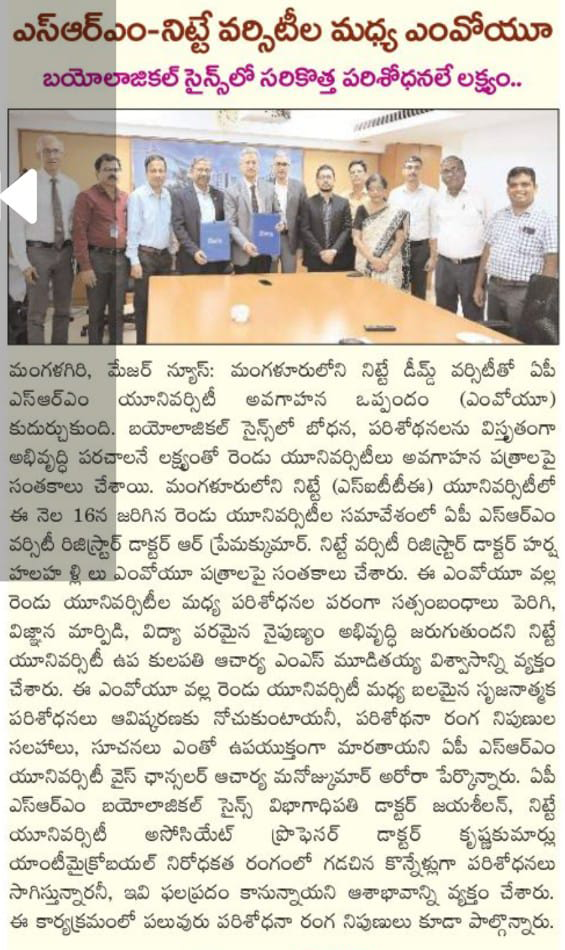
Power
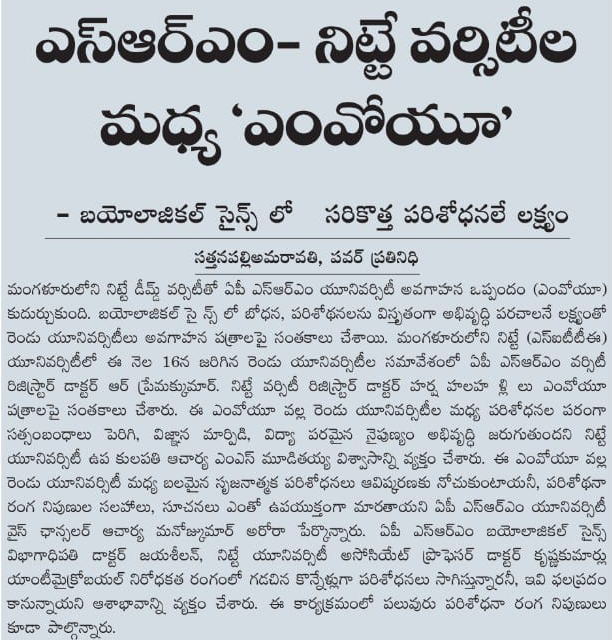
Arthprakash
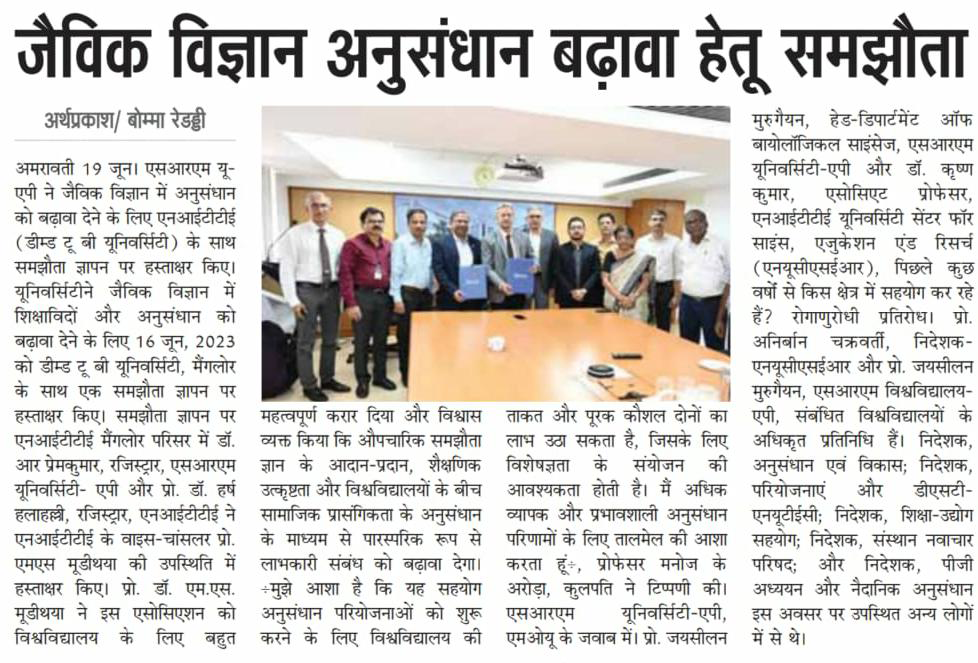
- Best Paper Award: Conferred to Dr Raviteja KVNS at RAISE 2023 June 20, 2023
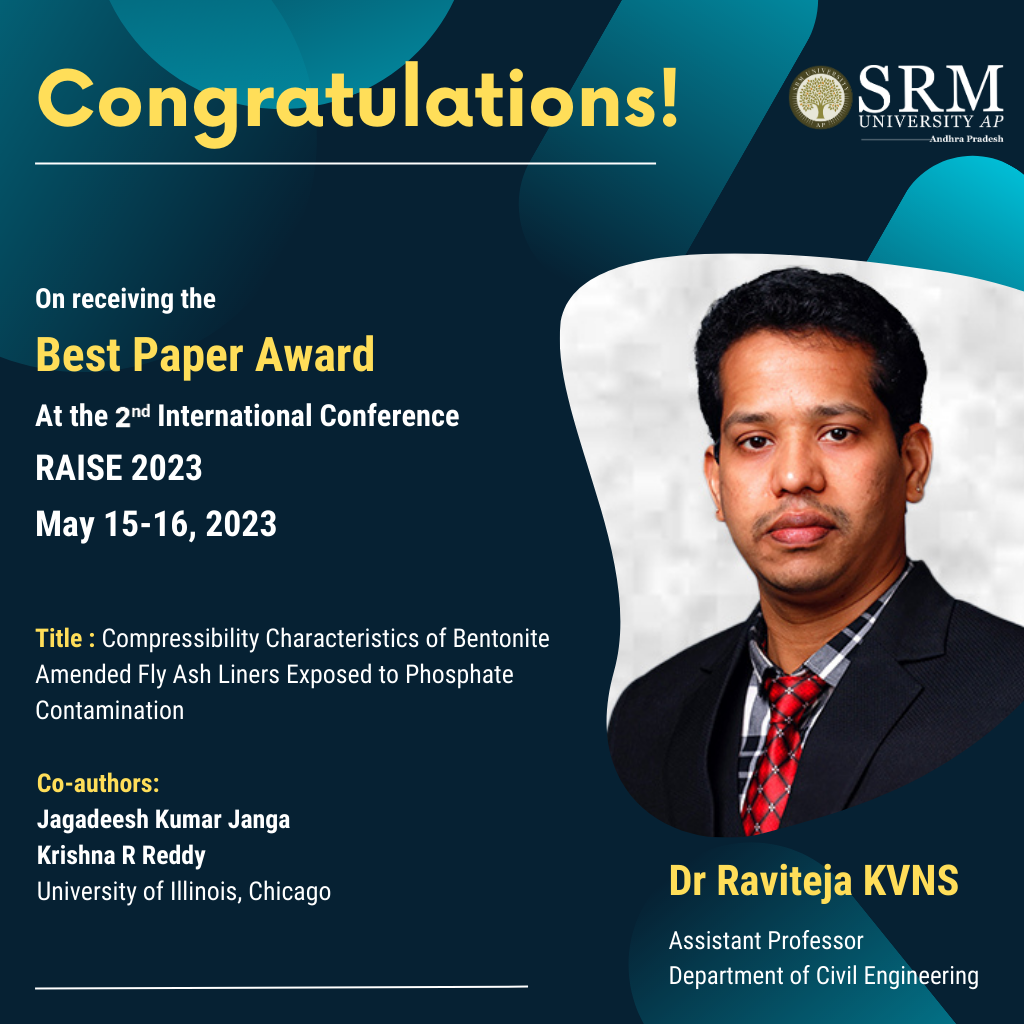
The Department of Civil Engineering is glad to announce that Dr Raviteja KVNS, Assistant Professor, has received the Best Paper Award for his paper titled “Compressibility Characteristics of Bentonite Amended Fly Ash Liners Exposed to Phosphate Contamination” at the 2nd International Conference RAISE 2023 (Recent Advances in Sustainable Environment) held on May 15-16, 2023. Dr Raviteja collaborated with Dr Janga Jagadeesh Kumar and Dr Krishna R Reddy, Civil, Materials and Environmental Engineering, University of Illinois Chicago for the research paper. Their cutting-edge research focused on developing alternate liner materials for waste containment systems.
Abstract
Waste containment systems like landfills, and impoundments are often lined with low permeable clays of hydraulic conductivity less than 10-7 cm/s. However, it is often challenging to get large volumes of low permeable clays near the project site. Conveyance of large volumes of clay from distant locations can be unsustainable due to the associated carbon emissions and energy costs, and not viable financially. Hence, there is a need to identify alternative liner materials without compromising on the containment capabilities. This study proposes the use of fly ash, amended with bentonite, as an alternative to the traditional liner systems. From preliminary studies, it is understood that a mixture of 80% fly ash amended with 20% bentonite is optimal to function as an effective liner material. However, the hydro-mechanical stability of liners needs to be investigated under different contamination scenarios. The present study reports the compressibility behavior of the proposed liner system under phosphate contamination, typically found in landfill leachate, impoundments, and stormwater retention ponds. One-dimensional consolidation tests were conducted on pure bentonite and fly ash with water to study the compressibility characteristics of individual materials. The optimum mix (80-20) was then tested at three different solutions exposure: water, 3.2 mg/L PO4-3-P and 12 mg/L PO4-3-P. It is depicted that the addition of 20% bentonite to fly ash did not affect the compressibility significantly, while the presence of phosphate contamination did not compromise the hydro-mechanical stability of the proposed liner system.
Continue reading → - Dr Seema Rani June 20, 2023
- Changes and Challenges in the Finance Domain June 19, 2023
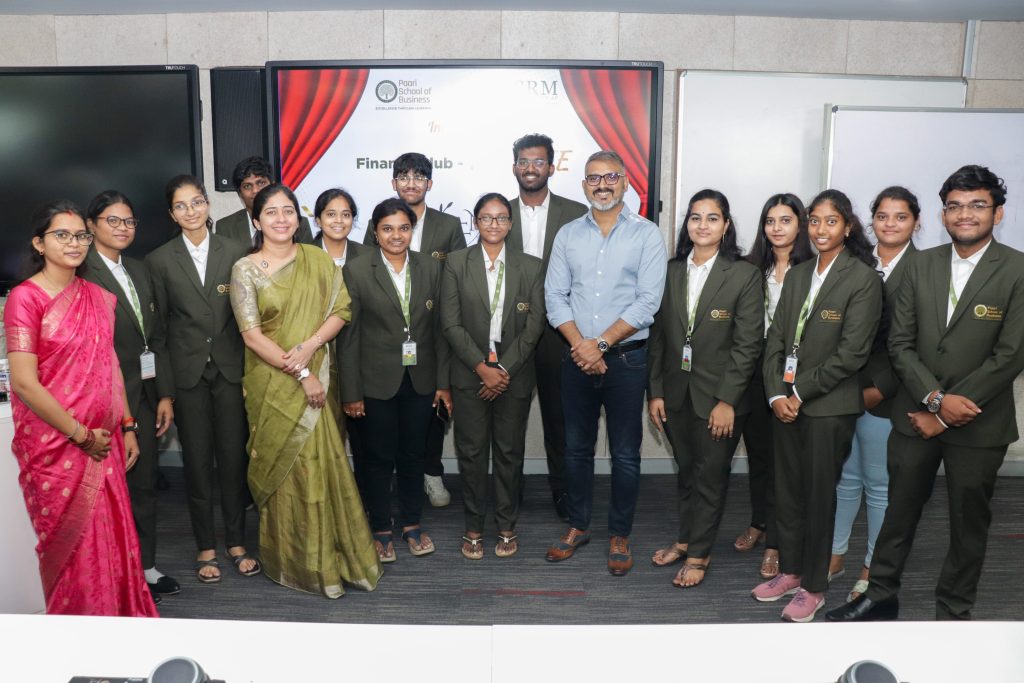
The B-School of SRM University-AP frequently organises invited lectures and guest talks by renowned industry experts that enlighten the students of the Paari School of Business on the evolving domains of business, finance and management. A recent guest talk featuring Dr Manish Jha, MD of Briisk Limited, founder and MD of Finkai and Myra Academy, as the keynote speaker was conducted on the topic “Digital Transformation in Financial Services: Challenges and Opportunities” on May 27, 2023.
Dr Manish Jha explicated the various nuances of the industry and advised the students on the specific skillsets that have to be mastered to survive in the rat race. He stated that improvisation skill is more important to survive in this dynamic field. Dr Jha explained the importance of an MBA and the difference in expectation and reality while pursuing a Master’s in Business. A detailed overview of different specialisations along with their scopes and opportunities was also discussed. He had also real-life examples from his own journey that deeply impressed and motivated the students and faculty of the school. Dr Jha also addressed Ms Sudha, who was also a guest at the talk and remarked that she is an inspiration for all the girl students who are interested in building up themselves.
Continue reading →


